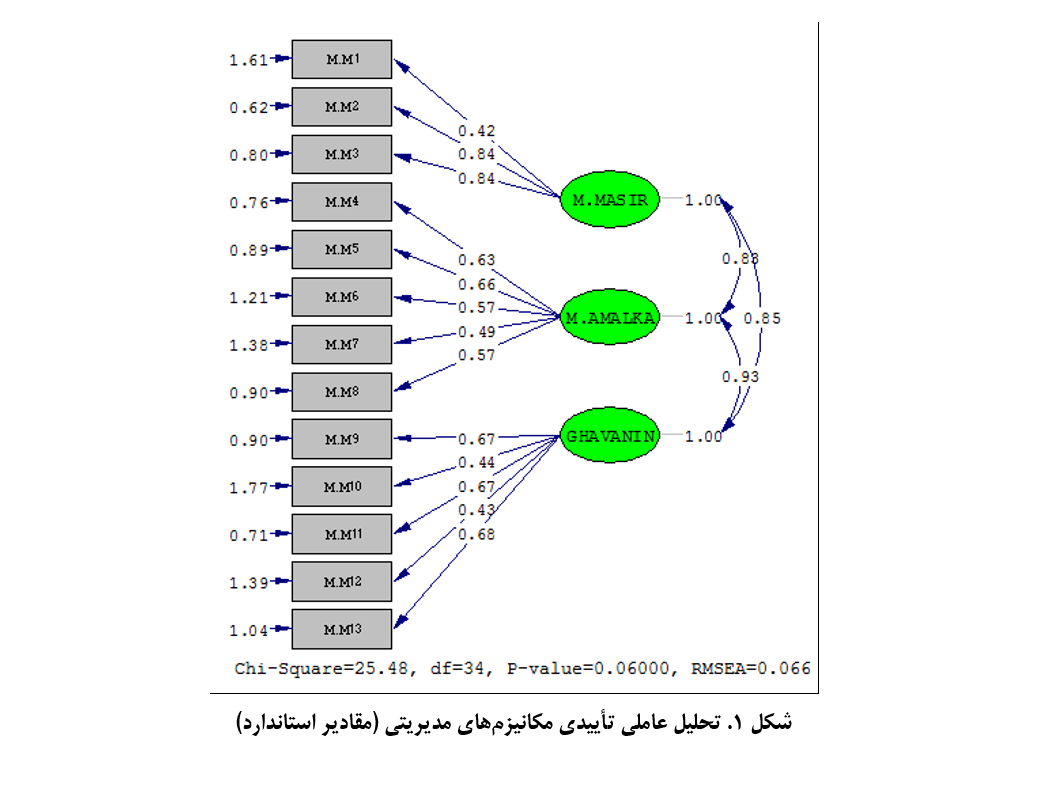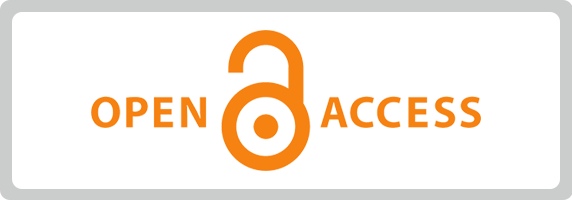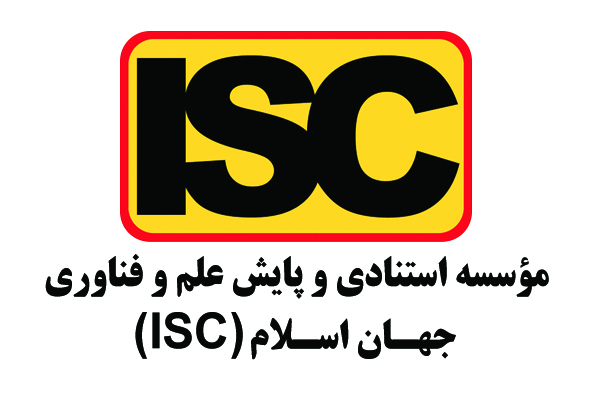Designing a Development Model for Inclusive and Comprehensive Employee Learning (Case Study: Pazargad Non-Industrial Operations Company)
Keywords:
Inclusive learning, structural equation modeling, employee development, organizational learning model, human resource management, corporate trainingAbstract
This study aims to design and propose a developmental model for inclusive and comprehensive employee learning in the Pazargad Non-Industrial Operations Company. A mixed-methods approach was employed. In the qualitative phase, content analysis was used to extract key components through semi-structured interviews with 22 experts in education and management. Purposive and snowball sampling were applied, and interviews continued until theoretical saturation was reached. In the quantitative phase, a researcher-developed questionnaire was designed based on qualitative findings and distributed to 295 employees. The collected data were analyzed using structural equation modeling (SEM) with LISREL software. The results identified nine main components in the proposed model: managerial mechanisms, environmental dynamics, educational potential, individual factors, organizational factors, responsive organization, learning transfer, cultural foundations, and learning transfer culture. Confirmatory factor analysis (CFA) confirmed the model’s strong fit (RMSEA < 0.1, Chi-square/df < 3). Moreover, managerial mechanisms, organizational support, and a strong learning environment were found to significantly influence inclusive employee learning. The study highlights that inclusive and comprehensive employee learning requires a multi-dimensional approach integrating managerial support, educational policies, learning culture, and technological tools. Organizations adopting this model can foster a sustainable learning culture. Furthermore, integrating modern technologies can significantly enhance employee learning processes.
Downloads
References
Adams A. Technology-Driven Hybrid Teaching Methodologies: A Lean Analysis of Student Learning and Job Seeking Courses. 2023. doi: 10.21467/proceedings.148.4.
Bérubé N. Hidden Challenges: An Invisible Disabilities Learning Activity. Organization Management Journal. 2023;21(1):19-25. doi: 10.1108/omj-03-2023-1810.
Boutwell KR. A Hierarchy of Learning Needs for Revolutionizing Inclusive Organizational Practices. Advances in Developing Human Resources. 2023;25(3):189-204. doi: 10.1177/15234223231176107.
Budhathoki BB. Struggle in Formal Education by Domestic-Worker Students. International Journal of Research -Granthaalayah. 2020;8(11):145-52. doi: 10.29121/granthaalayah.v8.i11.2020.2377.
Chaudhary N, Dutt A. Women as Agents of Change: Exploring Women Leaders’ Resistance and Shaping of Gender Ideologies in Pakistan. Frontiers in Psychology. 2022;13. doi: 10.3389/fpsyg.2022.800334.
Gouthro PA, Taber N, Brazil A. What Is Needed to Create Gender Inclusive Learning Organizations? 2019:242-56. doi: 10.1093/oxfordhb/9780198832355.013.26.
Harrington SG, Gee MS, Williams V, Best SR, Kilcoyne A. Impact of COVID-19 on Radiology Trainee Safety, Education, and Wellness: Challenges Experienced and Proposed Solutions for the Future. Journal of the American College of Radiology. 2022;19(3):446-9. doi: 10.1016/j.jacr.2021.11.013.
Honig MI, Honsa A. Systems-Focused Equity Leadership Learning: Shifting Practice Through Practice. Journal of Research on Leadership Education. 2020;15(3):192-209. doi: 10.1177/1942775120936303.
Humphreys D, Hinton MD. Seeking Equity, Quality, and Purpose as Higher Education Transforms. 2022:257-71. doi: 10.4018/978-1-6684-3809-1.ch013.
Jacobs G, Castek J, Harris K, Vanek J. Examining the Perspectives of Adult Working Learners and Key Stakeholders Using Critical Race Theory. Higher Education Skills and Work-Based Learning. 2022;12(6):1108-21. doi: 10.1108/heswbl-08-2021-0158.
Maclean N. Employment Equity Targets: How a State-Owned Enterprise Recruits People With Disabilities. Sa Journal of Human Resource Management. 2024;22. doi: 10.4102/sajhrm.v22i0.2355.
Musthafa HS. Strategic Integration of Diversity, Equity, Inclusion (DEI) and Artificial Intelligence (AI) in Human Resource Management (HRM). 2024:173-96. doi: 10.4018/979-8-3693-6402-4.ch006.
Pal A. Liberatory Design Thinking for Equity-Centered Instructional Design: A Systems Thinking Analysis. 2023. doi: 10.59668/722.13026.
Pellissier R, Siluk F, Flynn CT, Kanaan M. Approaching Equity, Diversity, Inclusion, and Social Justice Education as Imperative to Engineering Curricula. Proceedings of the Canadian Engineering Education Association (Ceea). 2022. doi: 10.24908/pceea.vi.15924.
Pruitt AS. Outcomes and Lessons Learned From Implementing a Diversity, Equity, and Inclusion Program at UCAR/NCAR. Bulletin of the American Meteorological Society. 2023;104(11):E2127-E33. doi: 10.1175/bams-d-22-0047.1.
Takahashi N. How Low-Code Tools Contribute to Diversity, Equity, and Inclusion (DEI) in the Workplace: A Case Study of a Large Japanese Corporation. Sustainability. 2024;16(13):5327. doi: 10.3390/su16135327.
Tarmizi AH. Addressing Equity: Assessing Inclusion and Diversity in Government Services, Operations, and Management. International Journal of Humanities Management and Social Science. 2022;5(1):40-9. doi: 10.36079/lamintang.ij-humass-0501.347.
Tyson J. Breaking Barriers. 2025:41-68. doi: 10.4018/979-8-3693-3876-6.ch002.
Udoyiu UE. Leveraging on Diversity in Nigeria’s Workforce: Strategies for Inclusion and Equality. International Journal of Research and Innovation in Social Science. 2023;VII(VII):994-1004. doi: 10.47772/ijriss.2023.70777.
Wavre SP. Learning Engagement Interventions to Enhance Diversity, Equity and Inclusivity Culture at Workplace. Journal of Workplace Learning. 2024;36(8):637-57. doi: 10.1108/jwl-02-2024-0046.
Chasokela D. Understanding Adult Education Through Learning Theory and Equity in Higher Education. 2024:261-92. doi: 10.4018/979-8-3693-5812-2.ch011.
Ramya R. Modern Technology as a Management Strategy for Gender Equity Achievement. 2024:1-28. doi: 10.4018/979-8-3693-3435-5.ch001.
Quinn MA, Banaszak LG, McFadden KL, McGrath K. System-Level Interventions. 2023:168-95. doi: 10.1093/med/9780197658185.003.0009.
Rice-Boothe MB. Face Ourselves: Striving for Antiracism in a Non-Profit. Journal of Participatory Research Methods. 2023;4(3). doi: 10.35844/001c.90785.

Downloads
Published
Submitted
Revised
Accepted
Issue
Section
License
Copyright (c) 2025 Journal of Study and Innovation in Education and Development

This work is licensed under a Creative Commons Attribution-NonCommercial 4.0 International License.












